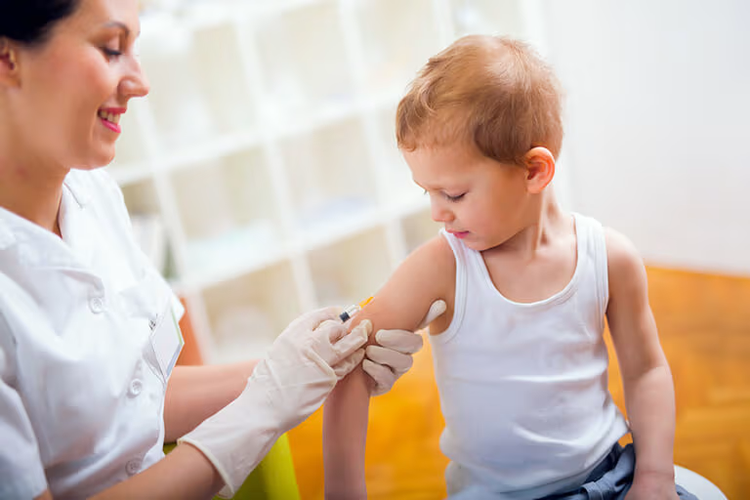The Role of Nurses in The Eradication of Measles and Rubella

At the end of September 2016, the World Health Organization (WHO) declared that measles had been eradicated from North and South America. The announcement is a tangible illustration of the great strides that have been made in combating the virus globally. A highly-infectious disease, measles at one point killed approximately half a million children around the world each year.
Dr. Carissa Etienne, Director of the Pan American Health Organization, stated during a press conference, “It is the result of a commitment made more than two decades ago when the countries of the Americas committed themselves to ending measles at the turn of the century.”
Though this announcement marks great progress in the fight against measles, the WHO reported that the disease is still a leading cause of childhood mortality in countries around the world. Consequently, it still is critical that nurses remain diligent in watching for the symptoms in patients and educating parents about the disease's risk to prevent future outbreaks of the virus.
Rubella and measles in the U.S.
While measles and rubella are separate diseases, in recent years they have been grouped together due to the combined vaccines that can protect against both. According to the U.S. Centers for Disease Control and Prevention (CDC), measles is an infectious viral disease that typically is accompanied initially by a cough, high fever, runny nose and red, watery eyes. A red rash usually breaks out on the skin about three to five days after the early symptoms appear, and a fever may develop, reaching temperatures of up to 104 degrees Fahrenheit.
Rubella, though often referred to as German measles, is not the same disease. According to the Mayo Clinic, it is caused by a different virus that is typically less severe and contagious than measles. However, both diseases are accompanied by a signature red rash. Other symptoms of rubella include a headache, stuffy or runny nose, enlarged lymph nodes, mild fever and aching joints. Once a person has recovered from the sickness, lifelong immunity typically has been developed, which prevents future occurrences. While rubella is generally a mild disease, it can cause severe complications when it occurs in pregnant women. The CDC reported that when a pregnant patient is infected, there is a 90 percent chance that the unborn child will develop congenital rubella syndrome, which can cause birth defects or death.
In extreme cases, both diseases can result in deafness, blindness and brain damage, as well as death, according to the CDC.
The effort for eradication

“This historic milestone would never have been possible without the strong political commitment of our Member States in ensuring that all children have access to life-saving vaccines,” Etienne said in a press release. “It would not have been possible without the generosity and commitment of health workers and volunteers who have worked so hard to take the benefits of vaccines to all people, including those in vulnerable and hard-to-reach communities.”
The CDC reported that measles was officially considered eliminated in the U.S. as of 2010, the result of a highly effective vaccine that was distributed widely through a strong vaccination program. However, it still can pose a threat, especially as anti-vaccination movements gain traction.
“The only way it can come is from other countries, usually from U.S. travelers who travel abroad and who are not protected through vaccinations, who get infected overseas and bring it back,” Jane Seward, the CDC's viral disease division deputy director, told The Washington Post.
This possibility was clearly illustrated at the end of 2014, when an outbreak of measles that appeared to originate at Disneyland resulted in dozens of instances of the disease in California and other states. In fact, the outbreaks in 2014 led to more cases of measles than were recorded in the U.S. in the previous five years combined. Of the patients in California who contracted measles, the CDC reported that 45 percent were unvaccinated, while only 12 percent had at least one dose of the vaccine. Another 43 percent were of unknown vaccination status.